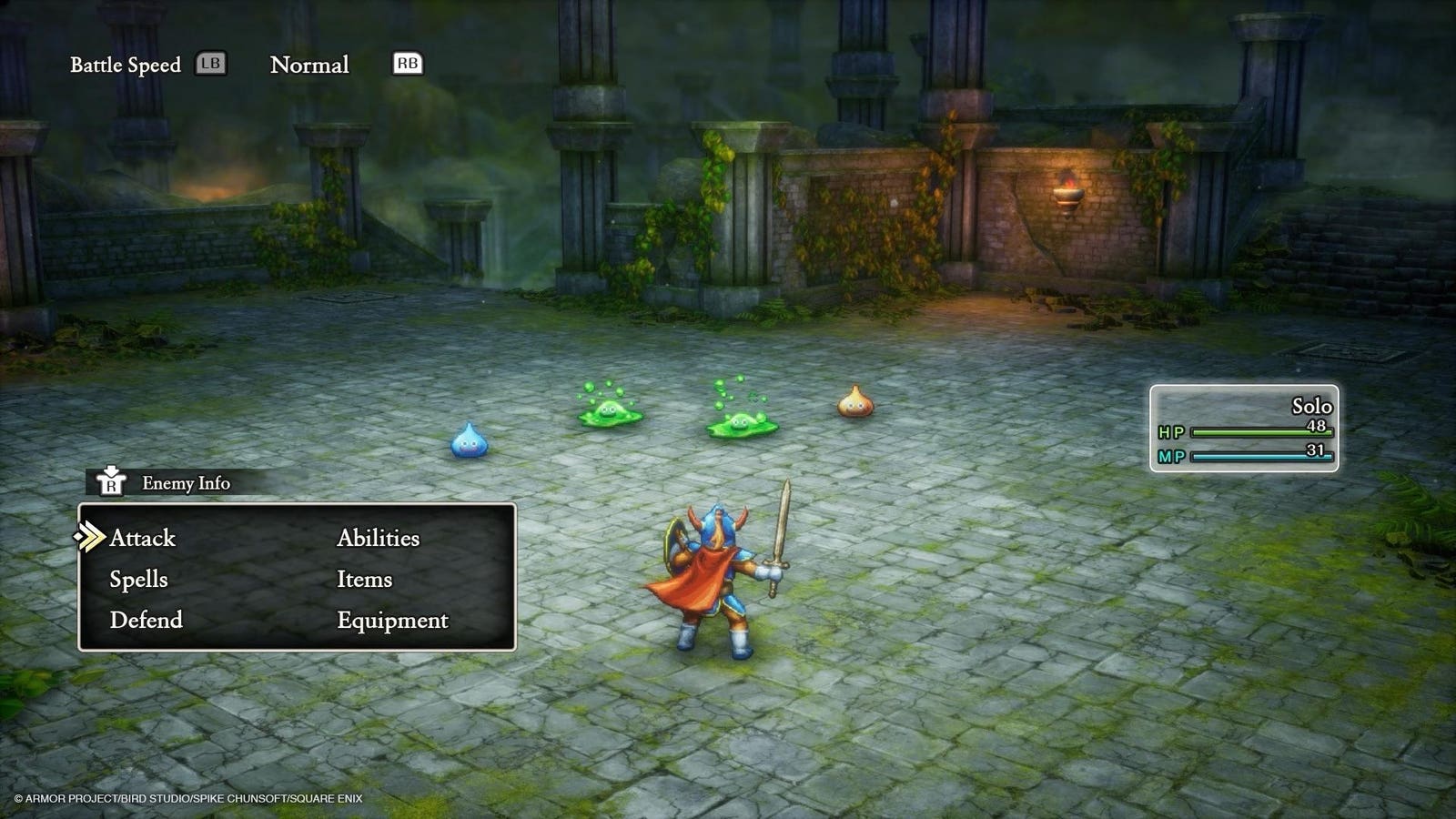As followers of my Forbes channel may have spotted, premium home video download service Kaleidescape has today (November 18) announced a new more affordable and more compact storage option for its elite home video server service. This new Mini Terra Prime, though, is actually just the latest addition to what might in the context of Kaleidescape’s previously somewhat glacial product development pace be considered a recent tidal wave of new products aimed at making its service way more accessible, in terms of both price and user friendliness.
In particular, the Mini Terra Prime storage device/server arrives hot on the heels of Kaleidescape’s launch of its latest movie player, the Strato E, which offers far and away the most affordable way to date of accessing Kaleidescape’s highest performance tier.
The Kaleidescape Strato E player (left) and Mini Terra Prime server are a match made in home cinema heaven.
Photo: John Archer
With all this in mind, I figured the time was right to finally do something that I’d honestly resisted doing for pretty much a couple of decades: Actually live with a Kaleidescape system, namely a Strato E plus Mini Terra Prime, to see if it could do what I’d previously stubbornly refused to accept it might. Namely, drag me away from my long-lasting love affair with physical media.
It’s worth me lingering on this point a bit longer before getting stuck into why Kaleidescape’s latest products are genuine game changers. Basically I’ve loved physical media on both a practical and philosophical level at least since DVD was a thing. I’m a sucker for any fancy packaging wrapped around a shiny disc, no matter how much I increasingly seem to be expected to pay for the privilege. I love a good animated disc menu screen. I get a bit giddy if a film ships with a second disc alongside it that’s devoted exclusively to extra features. I can’t get enough of any posters, booklets, postcards and so on a special edition release might contain.
Most importantly of all, I’ve never tired of the extra picture and sound quality a well mastered physical media release across all the DVD, Blu-ray and now 4K Blu-ray movie disc generations has been able to deliver over the years compared with any streamed or broadcast alternative. The AV quality of a viewing experience plays a fundamental part in my enjoyment of whatever film or TV show I’m watching, and physical media has for so long felt like the best way to get the best all-round experience.
There’s also been my long-held sense that I don’t own something unless I can physically hold it in my hands. Tangibility counts – not least because unlike a film I may have bought on a streaming service, I don’t run any risk of potentially losing access to that film if the streaming service loses the rights to a studio’s titles for some reason. Also, what digital version of any film or TV show provides a gold-embossed title or etched steelbook relief for me to run my fingers over?!
The Mini Terra Prime (top) and Strato E player feature identical designs and dimensions, apart form the server having more cooling vents.
Photo: Kaleidescape
While movies on disc have become increasingly far from cheap, at least if you want the most cutting edge disc format and premium packaging, it’s still historically been a relatively affordable approach to collecting films. Even decent quality 4K disc players can cost as little as a couple of hundred bucks.
In other words, while it’s possible to spend thousands on a high-end 4K Blu-ray player if you want to, the ‘barrier to entry’ for physical media is actually pretty low. Whereas historically the barrier to entry for Kaleidescape has been so high that it’s been comfortably of reach for most households. Which is where the Strato E in particular and, if you can stretch to it, the Mini Terra Prime come in.
Money talk
The $2,995/£3,399 needed for the 4K Strato E puts Kaleidescape within reach of way more people than any player before besides the HD-only (and so not really a big attraction to today’s home cinema fan) Strato M. This price does only get you 480GB of built-in solid state storage, though – enough for to hold a mere 4-6 4K movies given how big Kaleidescape movie files are. So you’ll be looking at a lot of deleting watched films to make space for new ones.
This is where the new Mini Terra Prime comes in, providing you with 8TB of solid state storage – enough to hold around 125 4K films. This does up the financial ante considerably with its $5,995 price it has to be said, but it’s still comfortably the most affordable solid state external storage server Kaleidescape has ever made.
Films once you’ve secured the necessary Strato player and optional but very worthwhile storage server are priced by the studios Kaleidescape’s service carries rather than Kaleidescape itself – and they’re broadly similar to physical media prices. The exact cost of a film can vary depending on both its age and the quality (HD or 4K) it’s presented in, but the range typically goes from $9.99 for an HD-only title up to $34.99 for a recent 4K release (where the purchase also gives you access to the HD version of the film). You can rent some titles, usually for a flat rate of $7.95 for both the HD and 4K versions – though this can be a fair bit higher for some “premium” rentals (usually the most recently released titles).
Studios can and do offer special sales periods on Kaleidescape, with some sort of Black Friday activity expected on the service over the coming weeks.
The Strato E is Kaleidescape’s most affordable 4K video player ever.
Photo: John Archer
Now that we’ve covered the key financial part of the Kaleidescape vs physical media equation, let’s get into the specifics of the particular hardware I’m using. Starting with the fact that both the Strato E and new Mini Terra Prime units sport the same identical compact (6.4(w) x 1.1(h) x 6.4(d) inches) shape, and are both encased in the same architectural-grade steel bodywork. Both also feature attractively integrated perforated areas on their bodywork included to enable the devices to cool silently, without the need for any noisy cooling fans.
In time-honoured Kaleidescape fashion, each box radiates either an orange or blue light depending on whether it’s up and running on a network or not. Network connection for both devices can only be achieved via physical Ethernet cables; understandably given the huge amounts of data the system wants to be able to shift, Wi-Fi is deemed not to cut it.
Dream team
While Kaleidescape’s two most recent bits of kit are literally made for each other and make an attractive partnership either sat together on a shelf somewhere or slotted into a kit rack, they don’t actually physically connect to each other. Instead, content on the HDMI-less server gets to the Strato E ready for output via the player’s built-in HDMI port by physically connecting both devices to your home network router.
There was a time when Kaleidescape felt like it belonged strictly in the ‘professional installation’ bracket of home entertainment products. I managed to get the Strato E and Mini Terra Prime installed and communicating with each other by myself in only around 10 minutes, though. And that included installing the impressive Kaleidescape app on my phone – an app which as well as aiding set up also provides your main way of interacting with the Strato E given that unlike the step-up Strato V, the E doesn’t ship with an included remote control. You can buy a physical remote as an option if you wish, but said remote is nothing special, honestly, so you’re probably best off just getting used to the app.
Since I was using the Strato E in combination with the Mini Terra Prime server, I got the ‘full’ Kaleidescape operating system rather than the stripped back version you get if you’re using the Strato E by itself. This full menu system is so jam packed with titles, themes and contextual content links that the sheer quantity of beautifully rendered header icons for every available film can initially feel a bit overwhelming (though there is a text list viewing option if you prefer that). Take a deep breath and devote a few minutes to really exploring the many content finding options available to you, though, and you’ll soon come round to thinking that the system actually does a pretty great job of handling such vast quantities of titles and data. It does so startlingly slickly, too, with no hint of sluggishness and zero crashes in the time I’ve spent with the system so far.
Kaleidescape’s Store menu.
Photo: John Archer
When I talked about vast quantities of titles and data, I wasn’t kidding. Where in Kaleidescape’s early days there were (inevitably, really) real issues with how few studios didn’t provide their titles on the system, these days it’s hard to imagine U.S. customers, at least, ever running out of things to watch. Kaleidescape U.S. now works with more than 50 studios, including all of Hollywood’s biggest hitters, resulting in a movie store that contains almost 15,000 titles. This includes hundreds of titles, Kaleidescape claims, now available in 4K that aren’t actually available on 4K disc.
The title support is lower, it has to be said, in Kaleidescape’s other supported territories of Canada, Australia and the U.K. Kaleidescape is always working to expand its offering in all territories, though, and just in the past year it added a new major studio to its U.K. offering that added another 1,000-plus titles – representing an instant 20% or so increase on the previous number of titles available there. Nonetheless, there’s no getting round the fact that while every major film that ever comes out will almost certainly get some sort of Blu-ray or 4K Blu-ray release (unless it’s made by one of Netflix or Prime Video), not every film that ever comes out will necessarily appear on Kaleidescape. Especially outside the U.S.
It’s not all 4K and roses
Not every title available in any territory can be guaranteed to be available in 4K with Dolby Atmos either. Kaleidescape can only work with what it gets from the studios, so there are still a few standard definition titles around on the platform alongside the much more common HD and 4K offerings. Kaleidescape is continually looking to upgrade titles as soon as better masters are available, though – and is particularly busy right now adding Dolby Vision masters to an ever growing range of titles following the addition of Dolby Vision HDR support to its platform in 2024.
Nonetheless, unless you’ve somehow meticulously investigated what quality all your favourite films are in on Kaleidescape and have a crystal ball about what future favourite releases might be made available in, you don’t know when you buy a Kaleidescape system what quality a favourite film might be available on it in with the same certainty you have when you buy a a film on disc.
Helpfully, the many curated content sections carried in the extensive Strato E menus you get with the Mini Terra Prime attached include specific image quality “shelves”. So, for instance, there’s a shelf/library exploration point for 4K Dolby Vision titles, and a “Recent HD Additions for Strato V & M” category.
You can choose to view your movie library in text list format if you find the thumbprint cover menu a bit overwhelming.
Photo: John Archer
Other content-organising shelves on the home screen of the store, to give you a flavour of just how far-reaching Kaleidescape’s AI-backed content organisation system is, include Stunning Cinematography, Academy Award Nominees for Best Picture, Finance movies (which includes Trading Places and American Psycho!), AFI’s Top 100 Movies, Screwball Comedies, Movies about Movies, and even “Rotten Tomatoes Certified ‘Fresh’”.
It’s worth adding, too, that Kaleidescape’s content curation options continue beyond the Strato E’s onscreen menus to Kaleidescape’s global website and app where, under a section called Testimonials, you can find various luminaries of the film world providing lists of their favourite films carried by Kaleidescape, as well as links, of course, to their own on-Kaleidescape filmographies.
Speech impediment
The only disappointing thing about Kaleidescape’s operating system right now is its rather basic voice recognition system. Available via the Kaleidescape app on your phone, it only works effectively if you stick to the absolute basics. So, for instance, if you just say “Spike Lee”, it will work and bring up all the Spike Lee films on the service. But if you say “Show me John Wayne Films”, the results include everything from Despicable Me to John Wick, as the system just literally picks up on every word in your search query. In fact, the lack of any sort of joined word thinking from the voice search feature meant that not a single John Wayne film appeared on the results list for my “Show me John Wayne Films” query… Even though the service obviously carries loads of Wayne classics.
I guess you could argue the approach to voice search is brutally simple. But it hardly encourages the sort of relatively complex searches or “chatty” relationship with the system that you get with, for instance, the voice recognition systems now built into most TVs.
Some of the films carried on Kaleidescape are available with the sort of bonus features we’ve come to expect on physical media releases. If you highlight John Wick 4 in the store, for instance, an Extras option appears under the purchase information that lists basically all of the same extras that are available with the film’s 4K Blu-ray release. Or if you check the Audio Tracks for the Extended Edition of The Lord of the Rings: The Return Of The King, you’ll see that all four commentary tracks available on the film’s physical media release are available on Kaleidescape too as options alongside the HD version of the film. None of the other extensive catalogue of extra features available with the Lord Of The Rings physical media releases are available on Kaleidescape, though.
Proof that the Strato E and Mini Terra Prime are exactly the same size and sport the same metallic build quality.
Photo: John Archer
In fact, it’s actually quite rare to find films on Kaleidescape supported by all or even any of the extra features available on its their physical media versions. This won’t bother some people, of course, but it is something for the sort of person who can’t get enough features about the filmmaking process to bear in mind.
While my experience of exploring Kaleidescape’s interface and content has uncovered one or two areas where the physical media route maintains an advantage beyond merely providing an asset you can actually hold in your hand, the Kaleidescape system is clearly a vastly more easy way to maintain and support a movie-loving habit. You don’t need a single real-world disc shelf anymore, for starters; every film you own lives only as an icon on a digital content shelf.
You can find a title in your library within seconds just by searching for it on the Kaleidescape menus, rather than having to spend potentially ages (if your disc organisation skills are as terrible as mine) looking on every shelf and in every drawer for a particular disc release.
Instant gratification
As soon as you purchase a film on Kaleidescape, meanwhile, you own it. Well, after a few minutes of downloading, anyway. Even the four-hour Lord Of The Rings: The Return Of The King Extended Edition in 4K with HDR took just 23 minutes to download on my 1GB broadband connection, with regular two hour or so 4K films taking around 12 minutes. You can halve this if you’re lucky enough to have a 2GB broadband system, of course, while HD movies on my 1GB broadband take just four or five minutes.
There’s no need to wait for an online disc order to be delivered in the post, or for you to have to head out to and back from the shops with a disc in hand. Nor do you always have to wait as long for a recently cinema release to become available for home viewing, as Kaleidescape’s relationship with film studios means that many new releases appear on Kaleidescape weeks before they’re available on physical media.
Kaleidescape’s digital files are completely immune, of course, to playback issues caused by the specks of dust, greasy fingerprints and the like that can wreak such havoc on a disc’s performance, making them even more “they look and sound exactly the same every time you play them” consistent in their delivery than physical media releases are.
The Strato E and Mini Terra Prime can both be fitted into kit racks.
Photo: Kaleidescape
While all these various major convenience features of the Kaleidescape approach to buying films clearly appeal in today’s cluttered, even quite overwhelming physical media world, they would essentially mean nothing if the service didn’t deliver the goods where it really counts: Picture and sound quality. Fortunately it does. With spectacular knobs on.
It all starts with the ability of the system to deliver amounts of data that no existing streaming or digital broadcast pipeline could even dream of. To put some numbers on this, a typical streamed movie file typically has a total digital footprint of around 8GB – yet on the Kaleidescape system this same film would likely take up around 10 times as much storage space. For an even more striking and specific comparison, the 138-minute long Joker: Folie A Deux film occupies just 18.8GB after being downloaded (painfully slowly) in 4K HDR onto a UK Sky Q box, while the Kaleidescape 4K HDR10 file of the film comes in at a huge 72.7GB.
Size matters
These file size numbers matter for the simple reason that the bigger a movie file is, the less likely it is to have been heavily compressed with the inevitable negative impacts compression has on picture quality. So the Kaleidescape files have the potential to look much cleaner, purer and more detailed than the same films will streamed or even downloaded on more “mainstream” subscription platforms.
Things get more complicated in this respect when it comes to physical media, though. Films can be placed on 4K Blu-ray discs with either 66GB or 100GB capacities – so there’s potential, at least, for films to enjoy file sizes broadly in line with those found on the Kaleidescape ecosystem. It’s by no means unusual to find studios (I’m looking at you, Disney) sticking pretty religiously to 66GB 4K Blu-ray releases, though. So films on those discs will almost certainly get smaller file sizes than the Kaleidescape editions. And even if a film is on a 100GB disc it doesn’t follow that a film file will use all of the available space. Most Blu-ray and 4K Blu-ray discs have to fit extra features into their available storage space as well as the film, too, while Kaleidescape files just contain the film, with any extras that might be available getting their own separate files.
As you’d hope from all of this fascinating talk of file sizes, Kaleidescape’s AV performance is genuinely spectacular. Arguably… perfect, actually, where the source file provided by a studio is the best available.
The Mini Terra Prime carries 8TB of solid state storage for ultra quick download and playback speeds.
Photo: John Archer
Native 4K films are shown with every bit as much detail, texture, density and clarity as they get with the very best quality 4K Blu-ray masters. In fact, over the course of comparing and contrasting more than a dozen titles between their 4K BD and 4K Kaleidescape appearances, there were at least a handful of occasions where the Kaleidescape image clearly looked better. Especially when it came to the handling of subtle film grain and general image density, crispness crisper and three-dimensionality. A result perhaps, of the 4K Blu-ray image sometimes seeming to slightly compromise the clarity of background elements in a frame while the Kaleidescape preserves the same sense of sharpness and detail across the whole image.
Motion with 24p sources also looks fantastically natural and – crucially and especially impressively given that the video is playing from a digital storage drive – consistent, always looking cinematic without appearing too juddery or suffering so much as a single stutter or skip during all the many hours I’ve spent with the system so far. Strangely the Kaleidescape also seemed to be delivering an ever so slightly more dynamic but simultaneously more balanced-feeling picture, at least with HDR10 (as opposed to Dolby Vision) sources, than even my outstanding Oppo 205 4K Blu-ray player was delivering.
Not once with any 4K release I tried did the Kaleidescape come up second best compared with the 4K Blu-ray version. Actually I constantly felt a slightly more intense and, for want of a better word, emotional connection with the Kaleidescape picture.
Consistently great
While the best Dolby Vision masters on 4K disc tend to look more similar to Dolby Vision images on the Kaleidescape, the Kaleidescape did seem to deliver more consistently Dolby Vision results across multiple titles – perhaps exposing issues with increased consistency in the disc mastering processes now that more and more disc titles are being produced through relatively small boutique labels rather than directly by the film studios themselves.
I must stress that overall, especially at first glance the differences between 4K Blu-ray and Kaleidescape 4K HDR files are small. But when you’re talking about image quality at a really premium level, even small differences matter.
With HD sources the advantage in Strato E’s favor is more pronounced. Especially when comparing with streams and broadcasts, but even when comparing with HD Blu-ray. The Kaleidescape’s HD pictures across pretty much every title I tried looked sharper, more detailed, richer in natural film grain, and even slightly more dynamic and contrasty. Even when using the same accuracy-based Filmmaker Mode picture setting for all the other HD sources in my collection.
This is what the main My Movies screen looks like if you don’t choose the Text option.
Photo: John Archer
Outstanding though the Strato E/Mini Terra Prime’s HD picture quality is, from the time I’ve spent with the system so far it can almost feel jarring after witnessing the splendor of Kaleidescape’s 4K images to find how many titles are actually still only available in HD or even SD resolution. This can apply to titles that are actually now available on 4K Blu-ray, particularly where that 4K Blu-ray has come from a relatively boutique source. The Long Kiss Good Night, for instance, is only available in HD on Kaleidescape at the time of writing, but is available in 4K HDR on a 4K Blu-ray produced by Arrow Video.
The ratio is shifting in 4K’s favour all the time, though, with Kaleidescape constantly involved in a mission to work with all of its studios to get the latest masters of its titles as soon as they’re created – including seeking out Dolby Vision upgrades to titles that had only been available in relatively basic HDR10 (which lacks the extra scene by scene picture data and 12-bit mastering of Dolby Vision) before the Strato V player arrived last year. Kaleidescape also claims, as mentioned earlier, that there are many titles available in 4K on Kaleidescape that aren’t as yet available on 4K Blu-ray.
Aside from childishly wishing that every film on such a top-performing video source as the Strato E was available in 4K HDR, though, really the only complaint I could fairly level at the Strato E/Mini Terra Prime’s video delivery is that there’s no support for the HDR10+ format. Like Dolby Vision, HDR10+ enables extra scene by scene video signal information to be included in a data stream to help compatible TVs deliver more accurate and usually more dynamic HDR images.
HDR10+ is used far more rarely in the non-streaming home video world than Dolby Vision is, though, so even if the Kaleidescape eco system supported it titles that actually took advantage of it would likely be rare. Though I’m sure owners of Samsung TVs, which famously don’t support Dolby Vision, would still appreciate even the very occasional HDR10+ movie turning up here or there.
Turning finally to the Kaleidescape system’s sound, regardless of whether it’s dealing with a DTS:X or Dolby Atmos mix its performance is basically again at the very least a match for the best soundtracks found on 4K and HD Blu-ray discs, delivering the same spectacular dynamics, the same three-dimensional sense of space around you, the same perfectly placed sound effects and immaculately traced transitions around the sound stage, and just as much detail, clarity, subtlety and context as any full-bore, lossless soundtrack I’ve heard from any physical media format. Remember that with Kaleidescape you’re getting full-fat Dolby Atmos mixes, not the compressed lossy form of Dolby Atmos that you get with streamed video.
Verdict
I came to the Strato E and Mini Terra Prime combination as possibly Kaleidescape’s worst nightmare. An inveterate lover of (almost) all things physical media, with a long history on top of that of frankly thinking the Kaleidescape system just too far out of too many AV fans’ financial reach to ever be more than a niche proposition.
As such a Kaleidescape “nightmare”, I’m still bound to say that the brand’s approach to home cinema does not “solve” the feeling of ownership and enjoyment associated with seeing a nicely packaged disc on a shelf that physical media fans love. It would be great, too, if Kaleidescape could get the same level of studio support in its non-U.S. markets that its U.S. platform enjoys. And it would be really great if more film studios could start providing Kaleidescape with the same extra features they provide with their physical media releases. However…
While its core philosophy may be the same, Kaleidescape in 2025 is a very different animal to what it was even as recently as a couple of years ago. It has products now that are substantially more affordable and easier to set up and use, greatly reducing its old barriers to entry. It now supports an already large and rapidly growing library of films and TV shows delivered in the latest premium 4K HDR picture and Dolby Atmos/DTS:X sound formats. Its unique approach is now backed up by widespread broadband speeds in all its supported territories, too, allowing you to download huge movie files in minutes rather than hours.
Add all of the above to the rather key ability of the Strato E and Mini Terra Prime to deliver truly peerless picture and sound quality with arguably even more consistency than physical media gives you, and Kaleidescape is absolutely no longer just a convenient custom install movie server solution for the rich and famous.
When it comes to pure AV quality, in fact, it’s now the best option in town for serious AV fans who’ve got TVs, projectors and sound systems good enough to do it justice. And it’s seriously hard for any home cinema fan not to love that.
—
Related Reading
Kaleidescape Launches New Smaller, More Affordable Solid State Movie Server
Kaleidescape Launches New Entry-Level Movie Player
Getting Kaleidescape’s High Quality Movie Download Service Just Got A Whole Lot Cheaper









